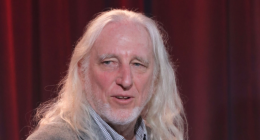NAB yesterday recorded a 17 per cent increase in its cash profit to $4.07 billion in its six-month results to the end of March, driven by interest rate rises.

Amid the cost-of-living crisis, authorities may be pushed to reexamine the current 3 per cent “serviceability buffer”, McEwan said.
In simple terms, the loan serviceability buffer means banks or lenders will add a buffer to the home loan interest rate to accommodate for any changes to the cash rate.
So say you have a $500,000 loan with an interest rate of 3 per cent, you would be assessed on whether you can afford up to 6 per cent.
Mortgage holders who took out loans before the 11 interest rate hikes began last May were finding it the toughest to switch lenders.
NAB’s chief financial officer, Gary Lennon, said the number of “mortgage prisoners” was two in five for customers who borrowed between August 2019 and July last year, when rates were at their lowest.
Read Related Also: Young women working for Andrew Tate were allegedly branded with tattoos which said 'owned by Tate'
“It is going to get harder to move for that cohort,” he said.
“There are going to be more and more customers who will find it harder to move banks.”

The Australian Prudential Regulation Authority (APRA) John Lonsdale and Commonwealth Bank CEO Matt Comyn have signalled mortgage serviceability tests could be revised to meet changing interest rate cycles.
The Finance Brokers Association of Australia (FBAA) managing director Peter White said earlier this year keeping the serviceability buffer means more people will be unable to refinance their current loans to negotiate a better rate.

Australia’s ritziest Airbnb stays






